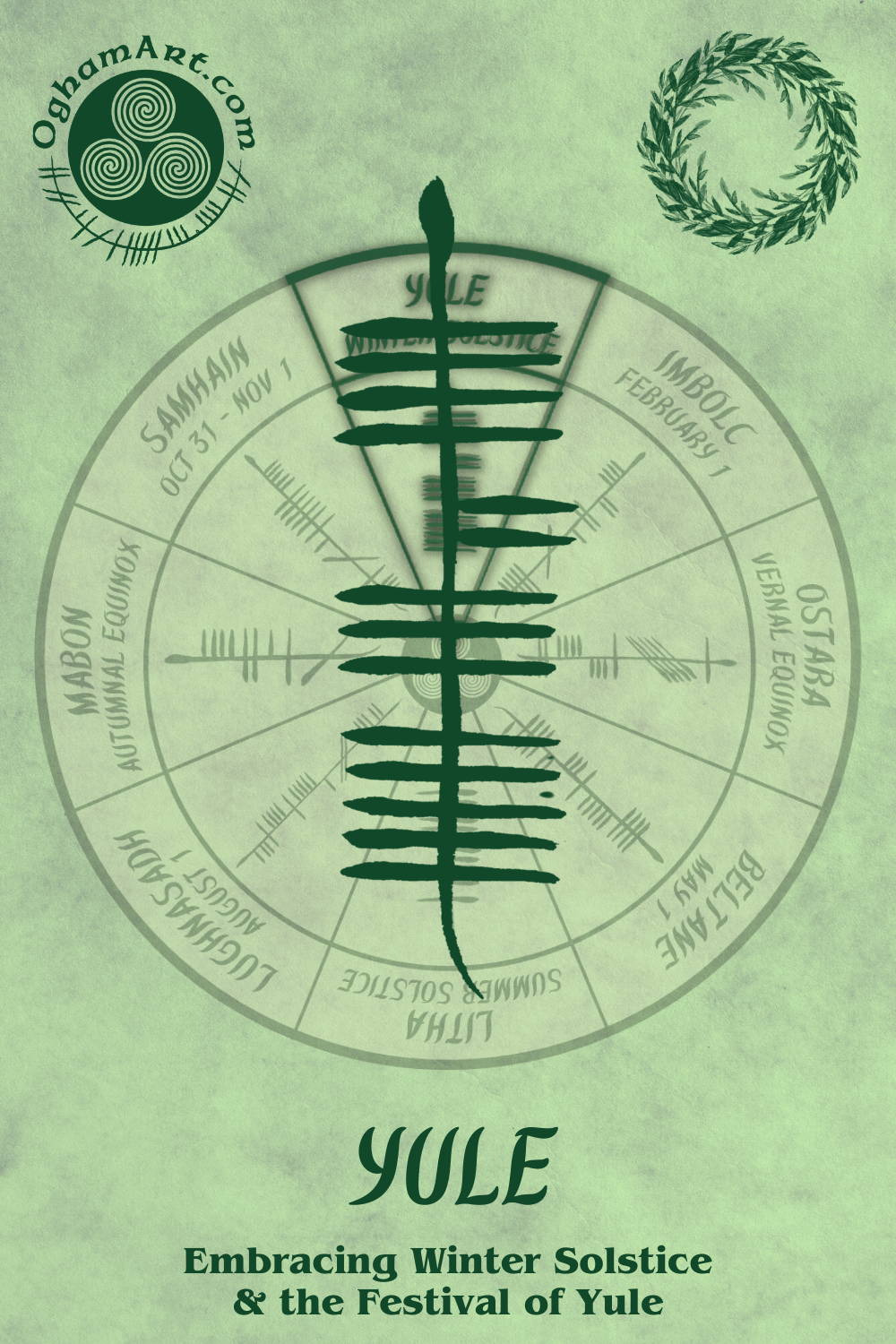
Embracing Winter Solstice & the Festival of Yule
With the longest night upon us in the Northern Hemisphere, a celebration of light, warmth, and ancient traditions emerges from the heart of Celtic heritage. Yule, a festival deeply rooted in the pagan calendar, marks the winter solstice and has evolved over centuries into a rich tapestry of history, rituals, and contemporary celebrations.
The celebration of the winter solstice has its origins in many ancient worlds, where communities revered the changing seasons and the celestial dance of the sun. The word “solstice” is from the Latin for solstitium - sol (sun) and stit (stopped or standing). This pivotal moment in nature's rhythm symbolizes the triumph of light over darkness as daylight extends each day until the next solstice in June.
Celestially speaking, winter solstice (for those of us in the Northern Hemisphere) is when the North Pole is as far back from the sun as possible. This maximum tilt keeps the sun low with daylight limited to only 7 hours and 14 minutes, give or take a few.
Our friends in the Southern Hemisphere get to enjoy the shortest night of the year - or their summer solstice - on the same day.
In pagan lore, the Oak King and the Holly King engage in a perpetual perennial battle. At Yule, the Oak King, personifying the waxing sun (or summer), is reborn and ready to take on the Holly King, representing the waning sun (or winter), bringing forth the gradual return of longer days. The two go back and forth each year, trading power, and doing what each does best with sunlight and darkness.
Newgrange

Newgrange is a prehistoric monument built over 5,000 years ago in the valley of the River Boyne, County Meath. Listed as a UNESCO World Heritage site in 1993 under Brú na Bóinne along with the nearby passage tombs of Knowth and Dowth, Newgrange has a special association with the winter solstice.
Above the entrance of its 62-foot long passage sits a roof-box - an opening that captures the morning sun of the winter solstice and brightens the entire chamber. This breathtaking alignment illuminates the chamber for a mere 17 minutes….Irish weather permitting, of course. Each September, approximately 30,000 people enter the “Winter Solstice Lottery” for a chance to stand inside the chamber with only a fraction being chosen for the honor.
Heritage Ireland Office of Public Works offers a live stream each year that can be viewed at https://heritageireland.ie/winter-solstice/.
Yule Over the Centuries
Yule is historically a Germanic observation with winter celebrations in what is now modern-day Austria, Czech Republic, Denmark, France, Germany, Netherlands, Poland, and Slovakia. With the early presence of the Celts in this region of central Europe, the connection is solidly intertwined. Christianization of many European peoples incorporated pagan rituals into traditions most commonly associated with the feast of Christmas.
The Yule log is a tradition rooted in both Norse and Celtic cultures. Families would select a large log, often from the sacred oak tree, and burn it in the hearth to symbolize the return of the sun's warmth. The Yule log was carefully chosen, adorned with evergreen boughs, and lit with a piece of the previous year's log, ensuring the continuity of the sacred flame.



Another essential Yule ritual is the decorating of the evergreen tree. The Celts believed that evergreen trees held powerful protective qualities during the harsh winter months. Over the centuries, decorating these trees with symbols of life, such as candles, fruits, and ornaments, became a way to honor the enduring spirit of nature and invite positive energies into the home.
One popular modern Yule practice is the creation of a Yule wreath. Crafted from evergreen branches, holly, and other symbolic elements, these wreaths adorn doorways, serving as a reminder of the enduring spirit of life even in the coldest of times. Families may gather to create these wreaths together, infusing the process with shared joy and creativity.
Feasting plays a significant role in Yule celebrations, with communities coming together to share in the abundance of the season. Traditional foods like roasted meats, spiced cider, and fruits were enjoyed, fostering a sense of unity and gratitude for the sustenance provided by the land.
Contemporary Celebrations
In the modern era, Yule has experienced a resurgence as people seek a connection to their roots and a deeper understanding of the cycles of nature. Contemporary celebrations of Yule often incorporate elements from various pagan traditions, embracing the festival as a time of renewal, introspection, and community.
For those attuned to the mystical, Yule offers a time for divination and reflection. The longest night of the year provides a sacred space for individuals to seek guidance, connect with their inner selves, and envision possibilities the returning light might bring.
Community feasts and gatherings continue to be a cornerstone of Yule celebrations, fostering a sense of belonging and shared connection. Potluck dinners, storytelling, and music echo the ancient spirit of coming together in celebration of life's cyclical nature.
What Shall Yule Do?
With inspiring lights decorating our homes and town greens for the next week or so, the extended darkness is somewhat bearable. Knowing that we will gain extra seconds (and eventually minutes!) of daylight paves the way to rebirth and renewal only a few months away.
Making the most of what winter has to offer - logs, trees, wreaths and feasts - brings a warm comfort of its own and a bond to generations past.
Happy Solstice. Blessed Yule.

